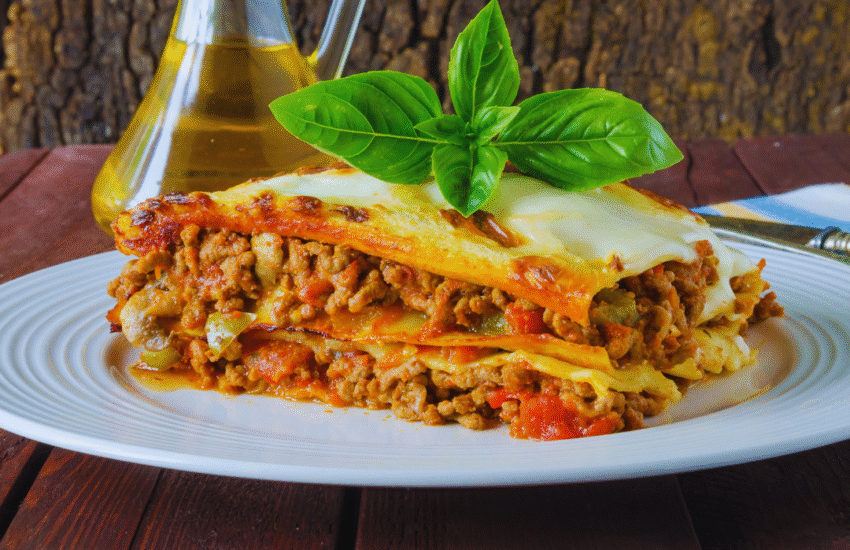How to Batch Cook Meals for the Entire Week: A Guide to Efficient Meal Preparation
Batch cooking is an efficient way to simplify meal preparation and ensure healthy eating throughout the week. With just a few hours dedicated to cooking, individuals can prepare a variety of meals that can be stored and easily reheated. By planning and cooking in bulk, anyone can save time, reduce food waste, and maintain a balanced diet.
To begin batch cooking, one must select recipes that store well and consider meal variety to avoid monotony. Organising the cooking process and investing in quality storage containers can significantly enhance the experience. Meal prep becomes smoother when a clear plan is established, allowing for quick assembly during busy weekdays.
Embracing batch cooking not only saves time but also brings a sense of accomplishment. With done-for-you meals ready to go, individuals can enjoy the benefits of home-cooked food without the daily effort. By implementing these strategies, anyone can transform their weekly meal routine and make healthy eating more accessible.
Essential Principles of Batch Cooking
Effective batch cooking requires an understanding of its concept, its advantages, and how to select appropriate recipes. These principles guide meal prep and help to reduce food waste while ensuring variety throughout the week.
What Is Batch Cooking
Batch cooking involves preparing multiple portions of meals in one session to last throughout the week. This method allows cooks to take advantage of bulk cooking, saving time on daily meal preparation. It typically includes cooking staples such as grains, proteins, and vegetables that can be combined in various ways.
The process is straightforward: select a day for cooking and dedicate a few hours to prepare meals. Ingredients are cooked in large quantities, portioned into containers, and stored in the fridge or freezer. With this approach, meal prepping becomes efficient, making it easier to maintain a healthy diet.
Benefits of Cooking in Batches
Batch cooking offers numerous benefits that enhance both meal preparation and overall eating habits. Firstly, it saves time during the week. Rather than cooking daily, individuals can simply reheat meals, allowing for more free time.
Another advantage is cost savings. Buying ingredients in bulk reduces the overall grocery bill, and it diminishes the likelihood of food waste by ensuring food is used before it spoils. Additionally, batch cooking supports healthier eating choices, as pre-prepared meals can prevent impulsive and less healthy options.
Finally, this method enables a diverse meal plan. By preparing a variety of recipes in advance, individuals can enjoy different flavours and cuisines, reducing the monotony often associated with weekly meals.
Choosing the Right Recipes
Selecting suitable recipes is critical for successful batch cooking. Ideally, recipes should be versatile and freezable. Dishes like casseroles, soups, and stews are excellent choices as they maintain quality when reheated.
In addition, consider recipes that use similar ingredients across different meals. This strategy ensures no single ingredient goes to waste. For instance, roasted vegetables can be used in salads, wraps, or sides throughout the week.
To better organise cooking efforts, it is helpful to create a meal plan. Listing recipes and their required ingredients can streamline the shopping process. Finally, keeping a balance between proteins, carbohydrates, and vegetables will create a nutritious and satisfying weekly menu.
Planning and Preparing for a Week of Meals
Effective meal planning and preparation can streamline the week ahead. Focusing on organisation and efficiency helps in creating healthy meals while saving time.
Meal Planning Strategies
Start by selecting a variety of meals for breakfast, lunch, and dinner. Consider dietary preferences, such as vegetarian or vegan, and aim for balanced nutrition.
Creating a menu for the week is crucial. This may include:
- Breakfast: Smoothie packs, overnight oats, or egg muffins.
- Lunch: Grain bowls, salads, or wraps.
- Dinner: Stir-fries, soups, or casseroles.
Make a detailed grocery list based on your menu. Group items by category for efficient shopping. Batch cooking should incorporate meals that complement each other in terms of ingredients, helping reduce waste.
Essential Tools and Equipment
Having the right tools simplifies the batch-cooking process. Key items include:
- Large pots and pans: For cooking big portions.
- Food processor: For chopping vegetables quickly.
- Containers: Use airtight, stackable containers for storing meals.
A reliable freezer is essential for preserving cooked meals. Select containers that are freezer-safe to prevent freezer burn. Labels with dates help track freshness, ensuring meals remain safe to eat.
Storing and Freezing Batch-Cooked Meals
Once meals are prepared, proper storage is vital. Allow cooked food to cool slightly before refrigerating or freezing.
For short-term storage, refrigerate meals that will be consumed within three to four days. For longer storage, freeze portions in individual containers. This makes defrosting easy and efficient.
When ready to use, defrost in the fridge overnight to maintain quality. Reheat thoroughly, especially for dishes containing proteins, to ensure food safety. This method helps keep meals healthy and ready at a moment’s notice.
Popular Batch Cooking Recipes and Ideas
Batch cooking allows for a variety of flavours and dishes to be prepared in advance, ensuring meals are both nutritious and delicious throughout the week. The following recipes showcase hearty stews, versatile casseroles, international curries, and make-ahead breakfasts that are easy to prepare and store.
Hearty Stews and Soups
Hearty stews and soups are perfect for batch cooking as they develop flavour over time and store well. Classic options include beef stew, which features tender beef chunks, carrots, and potatoes simmered until robust.
Chilli con carne is another favourite, combining minced meat with beans, tomatoes, and spices, offering a warming option that can be easily frozen.
Vegetarian options like bean stew provide a hearty alternative, packed with lentils and a variety of vegetables for flavour and nutrition. These dishes can be made in large pots and portioned in containers for convenience.
Versatile Casseroles
Casseroles are ideal for batch cooking due to their simplicity and adaptability. Lasagne is a popular choice, layering sheets of pasta with a rich meat sauce and creamy béchamel.
Cottage pie offers another filling option, with a base of seasoned minced meat topped with creamy mashed potatoes.
For a lighter take, vegetable casserole can include seasonal produce like zucchini, aubergine, and tomatoes, baked in a cheesy sauce. These dishes are easily reheated and can provide multiple meals throughout the week.
Curries and International Dishes
Curries are perfect for batch cooking because they often taste even better the next day. An Indian curry made with chicken or vegetables can be packed with spices like cumin and coriander, providing robust flavour.
Another excellent choice is a Thai green curry, which combines coconut milk with fresh herbs and vegetables for a fragrant dish.
To diversify, consider making a chicken tikka masala or butter chicken, both of which are popular and can be served with rice or naan. These dishes can be stored in the fridge or frozen for later enjoyment.
Make-Ahead Breakfasts and Snacks
Breakfast options can also be easily prepared in advance. Granola is simple to make in bulk, allowing for a nutritious topping for yoghurts or milk.
Muffins and scones can be baked and stored for easy morning snacking, with flavours ranging from blueberry to cheese and chive.
For a savoury option, consider making fishcakes or burgers, which can be prepped and frozen, ready to be cooked when needed. These ideas help streamline busy mornings and ensure nutritious options are always on hand.
Maximising Batch Cooking Success
Effective batch cooking involves strategic planning and consideration of various dietary needs, all while minimising food waste. By understanding how to adapt meals and manage ingredients wisely, anyone can enhance their cooking experience.
Reducing Food Waste
To effectively reduce food waste during batch cooking, proper planning is essential. Start by assessing what ingredients are already available at home. This helps in creating a shopping list that utilises what is on hand, minimising surplus.
Incorporating leftover vegetables into soups, stews, or stir-fries is an excellent way to use up extras. Consider freezing any excess meals in portion-sized containers, which prevents spoilage. Labelling each container with the date can also ensure the oldest meals are used first.
Regularly checking pantry staples like grains and legumes for expiry dates can aid in rotation. Additionally, using all parts of fruits and vegetables, such as peels and cores, can further decrease waste while providing valuable nutrition.
Adapting Recipes for Various Diets
Adapting recipes for vegetarian or vegan diets can expand meal options during batch cooking. It’s important to select recipes that can easily accommodate substitutions without compromising on flavour or nutrition.
Common ingredients like beans, lentils, and tofu can replace meat in many recipes, allowing flexibility. For those following a vegetarian or vegan approach, ensure that meals remain balanced by including a variety of whole grains, proteins, and vegetables.
Meal prep can include five-grain bowls or veggie-packed casseroles. This not only caters to different dietary preferences but also enables everyone to enjoy healthy meals. By making small adjustments to traditional recipes, batch cooking can be enjoyable and inclusive for diverse dietary needs.



